Corn has many uses, making it one of the most useful commodities. About 90% of the United States is devoted to corn/maize, with the bulk of that acreage located in central America. Aside from animal feed, maize manufactures various products, including oil, sweeteners, starches, alcoholic beverages, and ethanol. If you are wondering what per cent of US corn production goes to ethanol, then the answer is 40 per cent. Let’s check out more information about corn farming in USA below.
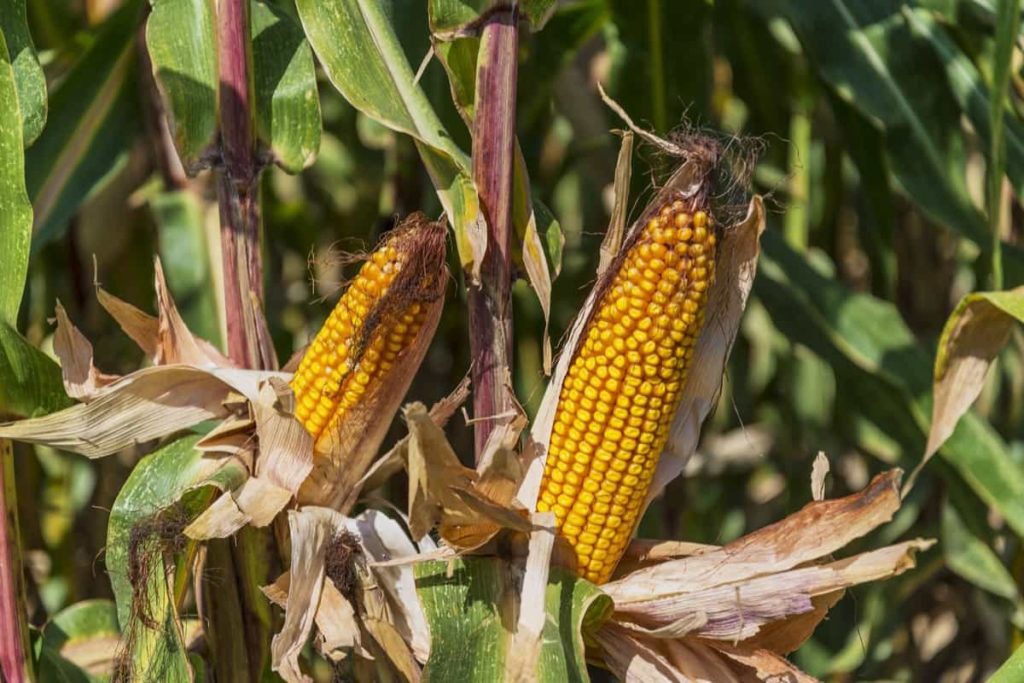
The US has some of the largest corn farms globally, constitutes a large amount of global corn production, and is also one of the countries in the world that defines a corn economy. Sweet corn, which is often consumed as a vegetable, and field corn, which is used for feed and other purposes, are two of the most common types of corn. Field corn is harvested after the kernels have dried, while sweet corn is harvested when the kernels are still fresh.
This article provides information about corn production by the US country, US corn production by state, corn and what it is used for, and corn/maize cultivation for beginners.
Corn/maize production by state in USA
The corn plant contains ears that generate kernels or seeds and leafy stalks that create pollen inflorescences. The plant also produces pollen. Corn is one of the most frequently farmed crops globally, with more annual output than wheat or rice combined. There are six distinct varieties of corn, including flint corn, pod corn, dent corn, flour corn, popcorn, and sweet corn. Dent corn and flint corn are the most common.
Corn types are dent, flint, and flour produce various products, including cornmeal, corn oil, animal feed, and alcoholic drinks like bourbon whiskey. However, most cultivated sweet corn is intended for human consumption because of its high sugar content. In addition, both ethanol and biofuel can be produced from maize.
With over 96 million acres of land explicitly devoted to corn farming, the United States is now the world’s leading producer of this cereal grain. Corn is planted and produced in most states. Still, most of it is grown in the Heartland area, including Illinois, eastern South Dakota, Iowa, Nebraska, Ohio, Missouri, and northern and western Kentucky.
Other parts of the country also cultivate and produce corn. Iowa, Illinois, Nebraska, and Minnesota were the four states that produced more than 1 billion bushels of corn in 2020. Corn was produced in more than 100 million bushels by 19 different states. The cultivation of corn is very important to the economy of the United States since the grain has several uses, including in the food, seed, and industrial sectors.
In addition, the United States accounts for around 38 per cent of the total corn exports made to other nations throughout the globe. Corn shipments out of the United States were roughly $12.9 billion in value in 2018. Iowa, Illinois, Minnesota, Indiana, Kansas, Nebraska, South Dakota, Missouri, Ohio, and Wisconsin are the ten states in the United States that produce the most corn. Following them on this list are the states of Missouri and Ohio.
In case you missed it: Organic Maize Farming, Cultivation Practices (Corn)
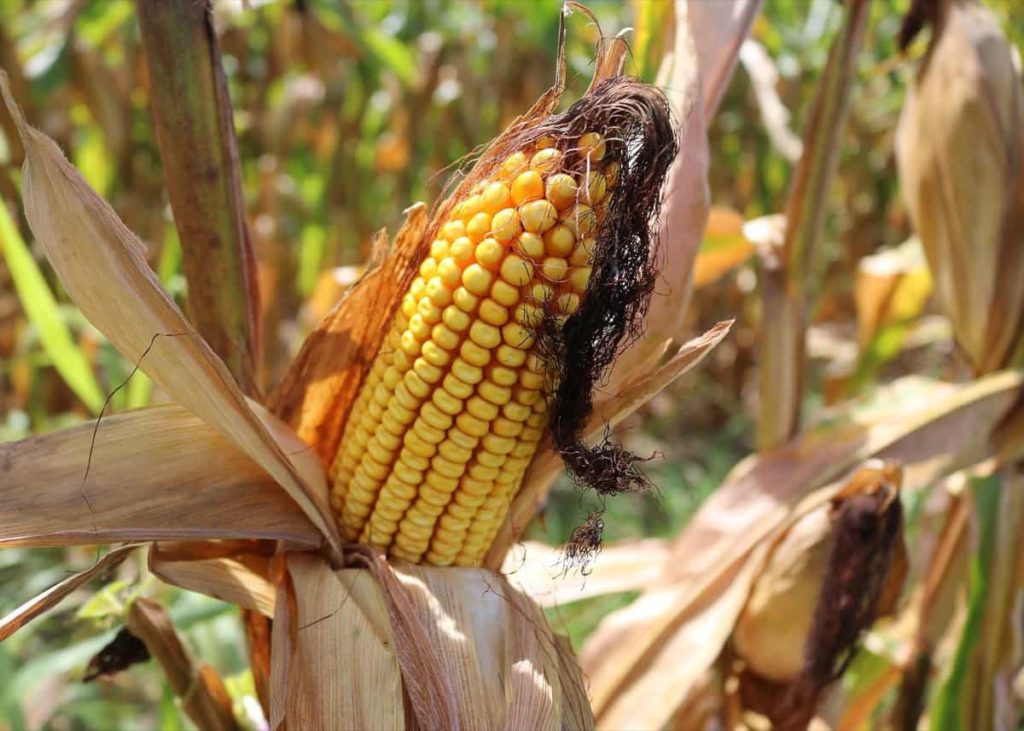
Iowa has the highest corn production in the US. Iowa is officially known as “The Hawkeye State,” but it is often commonly referred to as “The Corn State” owing to the fact that agriculture uses up 90 per cent of the state’s territory. In 2020, Iowa produced about 16.19 per cent of total corn grown in the United States or 2,296,200,000 bushels. After Iowa, Illinois produces 2,131,200,000 bushels of corn annually, accounting for around 15.03 per cent of the total corn output in the United States.
Both Nebraska and Minnesota contributed to the total with their respective productions of 1,790,090,000 and 1,441,920,000. Over five hundred forty-four per cent of the nation’s entire supply of maize was generated in just the top four corn-growing states. Each state’s corn yield is included in the following table and its percentage of total corn production in the United States. The following list is as per 2022 rankings.
| S.no | State | Production (M Bu) |
| 1 | Iowa | 2552.20 |
| 2 | Illinois | 2191.70 |
| 3 | Nebraska | 1854.60 |
| 4 | Minnesota | 1395.50 |
| 5 | Indiana | 1027.70 |
| 6 | Kansas | 750.60 |
| 7 | South Dakota | 739.80 |
| 8 | Ohio | 644.60 |
| 9 | Missouri | 548.80 |
| 10 | Wisconsin | 547.20 |
| 11 | North Dakota | 381.10 |
Corn Farming in USA: Step-by-step guide to cultivating maize/corn in US for beginners
When should we plant corn?
When corn should be planted is dependent on both the region in which you live and the climate that region experiences. When temperatures are higher, corn produces the most kernels. Therefore, hold off on planting the seeds until the soil has reached a temperature of fifty degrees Fahrenheit. Late in March or early April is the optimal time to plant in many parts of the United States. When determining the best time to plant corn, consider how damp the weather is. The months of March and April are often relatively rainy.
The seeds are at risk of rotting or simply failing to germinate if the circumstances are too damp. In addition, too moist circumstances might increase the likelihood of soil compaction, which can smother the plant’s roots. When it comes to planting corn, waiting until later in the season rather than planting it in late April or early May is often the best strategy. Planting corn between the 20th and 10th of May often results in the best germination rates and yields. Putting off planting until later allows the ground time to warm up to the right temperature.
In addition to this, it makes it possible for the moisture levels in the soil to become more uniform. Corn seeds can also be planted in the autumn and spring. In the same way that you waited until the soil temperature reached at least 50 degrees in the spring, you should now wait until the temperature has dropped to at least 50 degrees before planting. Be aware that you may not have enough time to cultivate an autumn harvest if your area has strong frosts early in the fall season.
Requirements for cultivating corn/maize in USA
Soil requirements to cultivate corn/maize
Healthy, fertile soil is essential for cultivating extremely delicious vegetables. A soil that is not just rich in nutrients but also teeming with creatures that are advantageous to plant growth. The best soil for growing corn is very deep (at least six feet), has a texture somewhere between medium and loose, is well-drained, has a high water-holding ability and organic matter content, and can feed the plant with all of the nutrients it requires. Corn isn’t too picky so that it can thrive even in less than optimal soil conditions.
Climatic requirements to cultivate corn/maize
Corn thrives in warm and sunny environments throughout the growth season (75–86 degrees Fahrenheit), with well-distributed intermittent moderate rainfall or irrigation (15 inches or more during the growing season), and has at least 130 days without frost. These climate and soil characteristics can be found in the corn belt of the United States.
In case you missed it: Maize Seed Germination (Corn), Time Period, Procedure
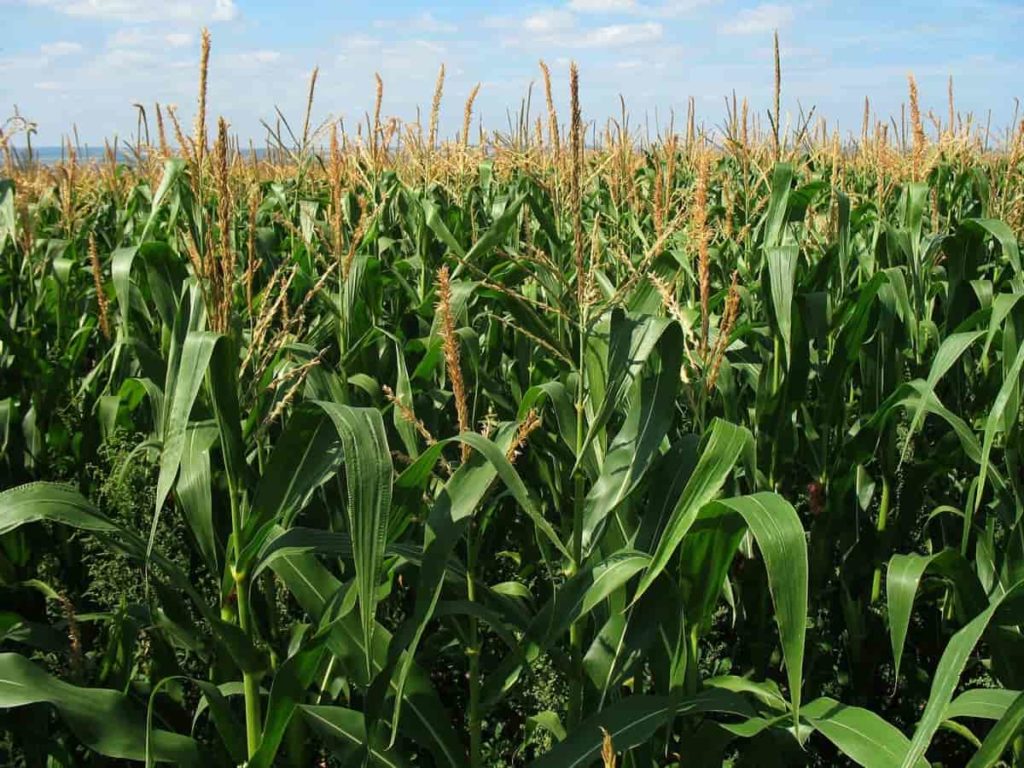
Humus requirements to cultivate corn/maize
Even if the weather isn’t right, healthy, living soil with a high humus content can frequently distinguish between a decent harvest and a catastrophe. This is because humus enables the soil to absorb significant moisture and keep it for dry periods. So it is not uncommon for a farmer who has been working to improve the quality of his soil to be rewarded with lush, green crops during a year of extreme drought while the crops grown by his neighbour have been destroyed.
Hybrid selection of corn/maize
Every year, farmers only have one shot at making the perfect choice on which corn hybrid to plant their fields with. The differences between hybrids in terms of their maturity, standability, yield potential, grain quality, disease resistance, and adaptability can be gathered from performance trials.
It is essential to conduct performance trials for irrigated and non-irrigated corn production in the physically closest areas to the farm. Because the performance of hybrids might vary depending on the environment, growers should choose two to three of the best hybrids to employ.
Disease resistance is essential when selecting hybrids to grow in the Deep South. Many diseases will flourish in environments with increased humidity, erratic access to water, and greater numbers of plants grown with irrigation assistance. Therefore, hybrids should exhibit resistance to various diseases, including anthracnose, southern corn leaf blight, common rust, grey leaf spots, and southern rust.
Because spores accumulate during the growing season, corn sown after corn is particularly vulnerable to leaf diseases. This is because corn is planted after corn. Insect-resistant corn that is genetically modified can be planted later, but there is a danger that it will not produce grain since it is less resistant to disease. If a disease is discovered shortly after tasseling on corn, various fungicides have been labelled for use on maize, and all of them should be evaluated.
Grain quality is determined by shuck covering and grain hardness, which work together to slow down moisture accumulation and prevent insect infestation in the ear. There are three distinct stages of maturation for corn: early (short season), medium (mid-season), and late (late season) (full season). After emergence, it takes around 115 days for the hybrids that develop the earliest and are best acclimated to Florida to reach full maturity.
For full-season hybrids, the number of days to maturity may increase to 125. When it comes to irrigated corn production, early and medium maturing hybrids are typically better suited since they develop 1–2 weeks faster, are often shorter and less susceptible to lodging, and may need fewer irrigations than late or full-season hybrids. However, “tropical” full-season hybrids are often cultivated following early-season corn hybrids to produce hay.
Consider planting a later-maturing hybrid, which often has superior shuck coverage, if the workload on the farm regularly limits harvesting early- to medium-maturing hybrids within 30 days after the black layer indicates they have reached physiological maturity. The following should be considered among the essential factors in choosing a hybrid: Grain yield, Maturity, Stalk strength, Grain quality, resistance to disease and insects, and Silage yield and digestibility.
Many hybrids may be produced with herbicide and insect resistance characteristics, valuable for pest management. These characteristics include several Bt traits for insect resistance and those with resistance to herbicides, including Roundup, Ignite, IMI (imidazolinone), and others. Other features in this category include: Planting options for corn hybrids with a high percentage of oil are also available in the Southeast.
These hybrids are more expensive than ordinary hybrids. Thus, you should only utilise them in situations in which the particular characteristic they possess will be to your financial advantage. Corn that is sown between May and July needs to contain the Bt gene for pest control.
In case you missed it: Maize Cultivation Income (Corn), Cost, Yield, Profit
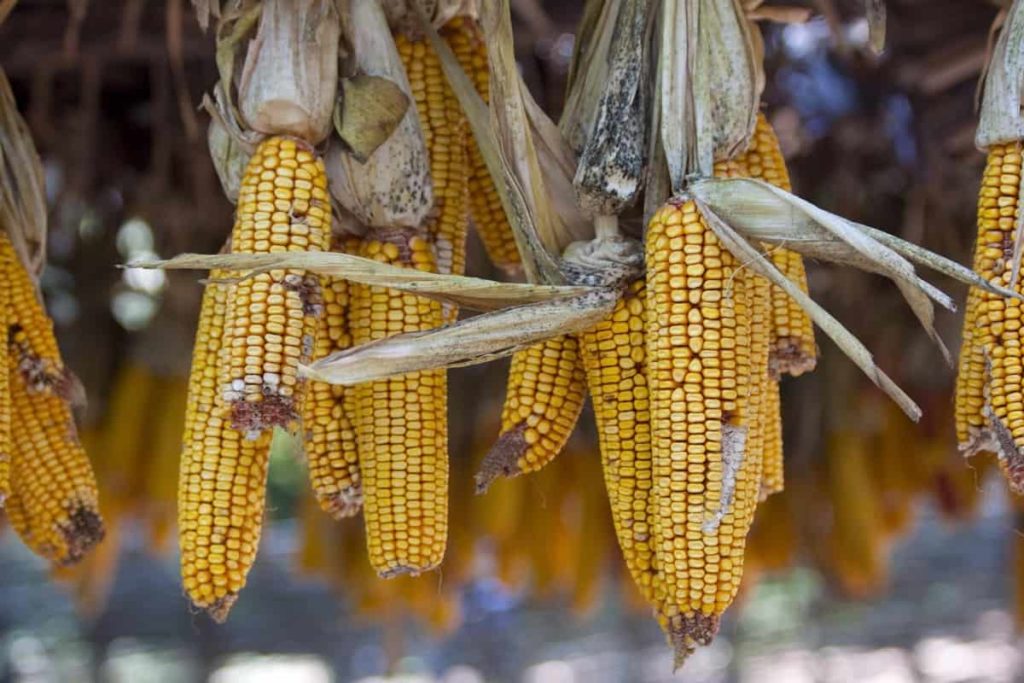
How to prepare seedbeds to cultivate corn?
The seedbed preparation should begin at least one month before planting with a significant tillage operation. This should be done. If cover crops are employed, they may need to be mowed down and worked into the soil more than a month before planting to give the residue time to decompose and prevent seedcorn larvae from developing. Earlier incorporation of substantial quantities of compost or manure is also recommended.
After this, do at least two light tillage operations to establish a smooth seedbed free of weeds. The last operation of the tillage process needs to be carried out on the same day as planting to guarantee that the seed will not be exposed to any weeds that have already grown in the soil. The depth at which seeds are planted is a consideration that plays a significant role in organic agricultural practices.
If you plant your seeds too deeply, it will take longer for them to emerge, and once they do, they will face immediate competition from weeds and a higher risk of harm from seedling diseases. On the other hand, on most soils, sowing the seeds at a depth of just one inch is adequate and enables quick emergence.
Details about plant populations and row spacing in corn/maize farming
The optimal number of plants to grow in a given area is contingent on several factors: soil, irrigation, fertility, hybrid, and other management strategies. Optimal yields are produced when plant spacing and emergence are consistent. A larger plant population is required for irrigated corn than for non-irrigated corn to reap the full advantages of irrigation. The hybrid, the expected yield, and the row width impact the seeding rate.
16,000 to 24,000 plants/acre is the recommended plant population for maize grown without irrigation. Typical planting densities for irrigated agricultural production vary between 24,000 and 34,000 plants per acre. Seed producers will often offer their customers a population recommendation for each hybrid. When using irrigation, it is advised to sow between 24,000 and 32,000 seeds per acre for most early and medium-maturing varieties.
Hybrids that mature later should have a plant count of 22,000–26,000 plants per acre. An excessive population drives up the cost of seeds and makes it more likely that the crop’s output may suffer due to insufficient watering, rainfall, or lodging. Therefore, it is recommended to sow 10–15 per cent more seed per acre than is required to achieve the appropriate plant population. The germination rate of corn seed is typically about 95 per cent, but another 5 per cent to 10 per cent may be lost to other pests, such as insects, disease, or other organisms.
Studies have shown that a higher plant population can improve yields when the rows are closer together. Because there is more space between the plants, the plants can use the available light, moisture, and nutrients. It does this by shading the ground more rapidly, which helps reduce weed growth. It is sufficient to have row widths between 30 and 36 inches for optimal irrigated yields.
However, water and other variables often restrict yield more than plant population does. Some studies have indicated that twin-row yields may be anywhere from 5 to 10 per cent greater than single row yields. First, count the number of seeds in a single row to calculate the population per acre and multiply that by 1,000. Then, check the functionality of each planter in many rows to ensure that everything is in order.
It is excellent practice always to do a second check on the planter to verify that the seed drop is producing the intended population levels. When it comes to achieving the seed drop and plant population that the user desires, vacuum planters provide superior control. It is essential to have planters kept in good condition for uniformly distributing plant populations, regardless of whether they are old or new.
If corn is to be grown without irrigation, the potential yield should not exceed 125 bushels per acre for management considerations, and the number of plants per acre should be reduced. Use the lower end of the suggested plant population range for corn grown in irrigated soil if the soil is sandy and there is only a little irrigation.
Cornrows that are around 15 inches apart have the greatest yield potential. However, because of the equipment’s limitations, the usage of thin rows may be restricted. This is because the modification of some machines may not be possible. Therefore, when looking to purchase new equipment, narrow rows should be one of your considerations.
In case you missed it: Baby Corn Farming Information Guide
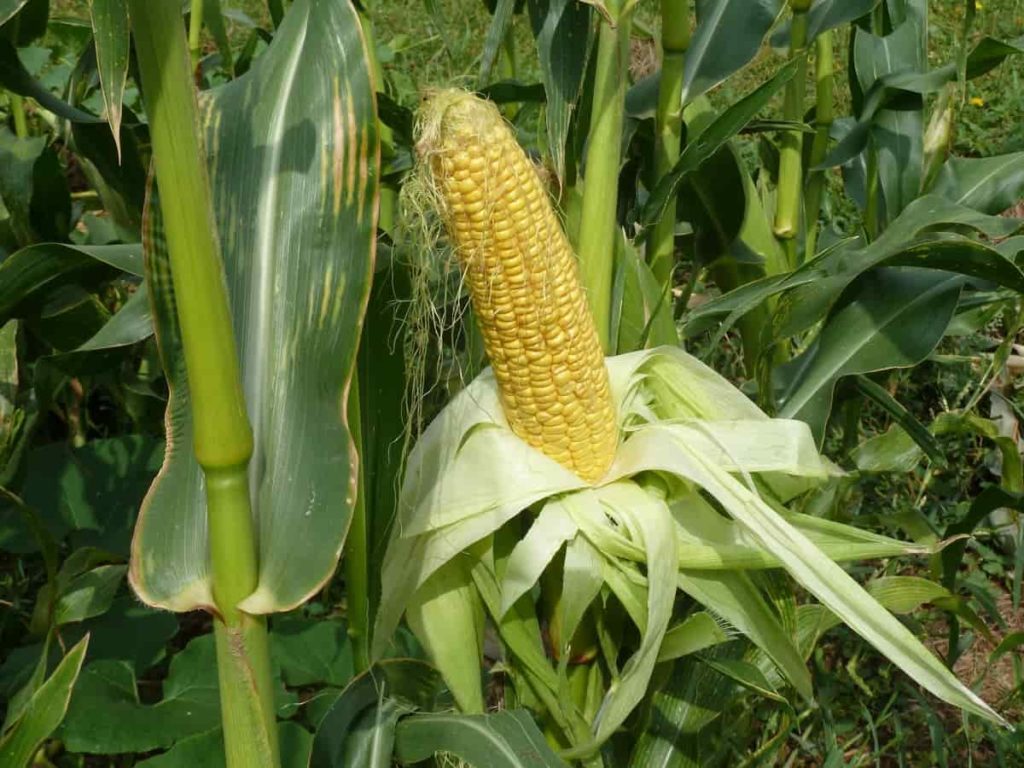
Weed management details for corn/maize cultivation
It will be particularly challenging to eradicate grassy weeds and warm-season broadleaf weeds like cocklebur and morning glory. Early-season weeds can be reduced by tilling before planting, but many summer annuals will sprout and flourish. Preparing a clean seedbed before planting is essential to provide the crop with an early advantage over any newly sprouting weeds. Cultivating weeds smaller than corn will be considerably simpler due to this development.
As a side benefit, the corn canopy should be used to shade the soil. As a result, the amount of weeds that can germinate and flourish is reduced. In addition, faster canopy closure can be achieved by increasing plant populations, narrowing rows, row orientations perpendicular to the sun’s path, and using taller hybrids.
Remember that yield declines occur most rapidly in the first 4 to 6 weeks after planting due to weed competition. Weeds that develop after the canopy has been closed will have minimal influence on production, but they may complicate harvest.
How to irrigate your corn/maize farm?
Irrigation substantially impacts corn/maize yields, although the increment might vary from year to year depending on the weather and other variables. In combination with other appropriate farming methods, irrigated fields should produce 150–220 bushels per acre. Non-irrigated corn yields may be anywhere from 5% to 75% of irrigated maize yields, depending on the region. Irrigation costs are stated to be paid regardless of whether or not a property has it.
Depending on the plant density, fertility, weather, days to maturity, and soil type, a corn crop’s total water demands might range from 20 to 24 inches throughout a season. Irrigation depths of 12 inches or more are common during regular rainfall occurrences. One bushel of corn requires around 5,000 gallons of water to grow. After the tassels have emerged, the root zone should be well-watered until the grain reaches physiological maturity.
Runoff water must be channelled off a field within 24 hours or fewer if adequate drainage is not provided in depressions or low places. Irrigation is required more often on a coarser-textured soil. From 0.7 to around 1.6 inches of water per foot may be found in typical coastal plain soils. Irrigation is critical in preventing runoff and stressing plants. In comparison to other crops, corn has a higher tolerance for irrigation.
When corn is tasseling during ear fill, it needs up to 0.33 inches of water every day. During the soft dough stage until maturity, moisture stress may result in a yield loss of 10 per cent to 35 per cent. Moisture stress before tasseling might result in a drop of between 10 per cent and 40 per cent in yield. At 15 inches high, corn needs around 1 inch of water every 7–10 days, one inch every 5–7 days till tassel emergence, and lastly, an inch every three days from the tassel emergence until maturity.
Fertilisation requirements for your corn/maize farm
Under conservation tillage, lime and phosphorus must be carefully controlled because they cannot be absorbed into the soil. To maintain the proper pH and P (phosphorous) levels, adding tiny quantities of lime and removing P every year is essential. Therefore, before planting a cover crop, the most important step in conservation tillage is to get the soil tested and add any necessary lime or phosphorus before planting a cover crop.
The cover and corn crops might use the same phosphorus (P). It’s worth noting that starting N and phosphorous can be beneficial to certain corn hybrids even if the soil test P level is appropriate. All potassium needed for both a cover crop and a corn crop may be treated simultaneously in soils with more density. It’s best to apply one-third of the potash in the autumn for the cover crop, then divide it between corn planting and topdressing in the spring.
Before growing a small grain cover crop in the autumn, administer just 20–30 pounds of N. Apply an additional 20–30 pounds of nitrogen in December or January if grass shows insufficiency. Corn may be sprayed with a starting fertiliser before planting. Conservation tillage planted corn can employ the same basic fertilisation programme as conventional maize planted.
Methods to reduce pests and diseases in corn/maize cultivation
A healthy corn stand is built on a foundation of cultural customs. The creation of a stand may dramatically influence pest populations and crop competitiveness, and tolerance to pest feeding. If conventional pest control methods aren’t accessible in areas where organic corn has traditionally been prevalent, don’t grow it there.
Crop rotation
Insect management may be significantly improved through crop rotation, one of the most cost-effective methods. Insect populations can be reduced by starvation, disruption in insect reproduction, or a combination of these two mechanisms in rotations that last at least two years. In addition, the rotation allows for the isolation of corn harvests from year to year. However, the effectiveness of this treatment for wireworm is debatable.
Depending on the species, one generation of wireworm might take anywhere from one year to five years. That’s why rotating out of corn can be essential for a long period. In addition, Billbugs may be effectively controlled by rotation in big units with a minimum distance of 800 to 1,000 feet between the current maize and the prior corn.
In case you missed it: Maize Farming (Corn) Information Detailed Guide
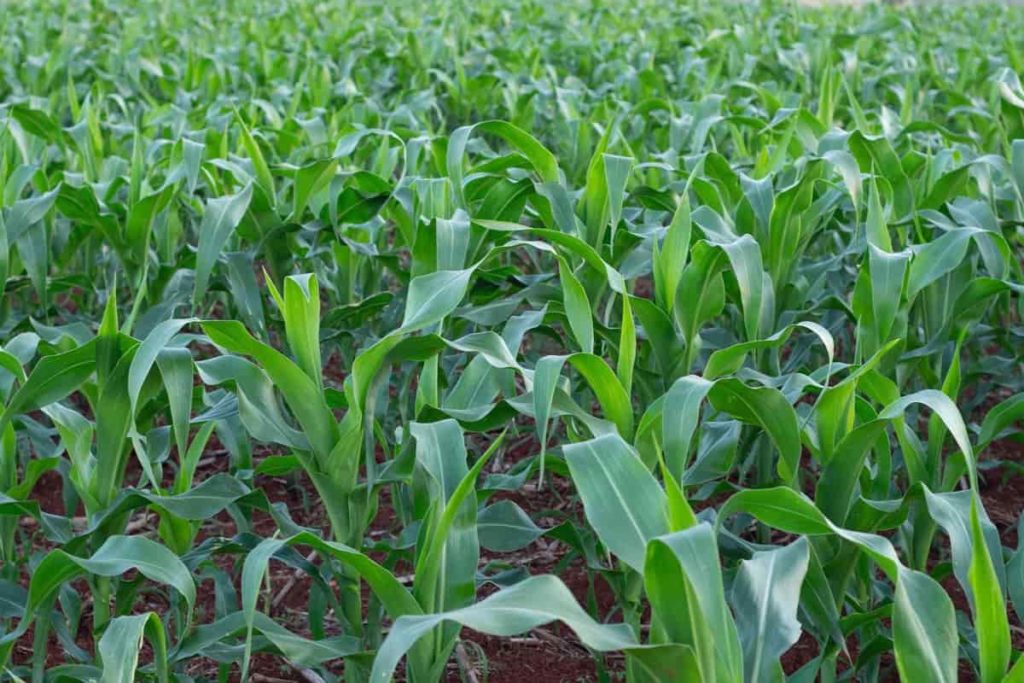
Tillage
Soil-dwelling pests that feed on seeds and seedlings are usually located near the soil surface. Wireworm, cutworm, grub, and seedcorn beetle populations may be controlled by winter or early spring disking and bird feeding and exposure. When all things work together, they may provide significant protection for newly planted seeds and young seedlings. While no-till organic corn mulches are being studied across the state, they aren’t as well understood as no-till soybeans.
Cover crops
Corn cover crops might help lower the number of insects. But, on the other hand, cover crops can boost pest densities such as cutworms and likely wireworms.
Hybrid selection
Germination speed, early strength, tight husks, resistance to pests like stalk rot, robust stems, consistent performance throughout a large population range, and uniform vigour are all aspects regulated by genetics that might decrease losses to insects.
Harvesting your corn/maize crop
Crop damage from pests and storms and field losses from ear drops and fungal infections can be avoided by harvesting early. Owing to stalk lodging, ear drops, and decreased kernel weight, the most significant reason for early harvest is to avoid production decreases caused by ear loss and rots that may occur due to these factors. As the harvest is delayed, fungal infections that affect the corn kernel become more problematic.
Harvest delays can also increase the amount of fungal pathogen-produced mycotoxins, leading to maize that is unsafe to feed to humans or cattle. The ideal time to begin harvesting corn is when the grain has reached less than 25% moisture content. Corn can be harvested in 10 days or less if the kernels have formed a black coating at the kernel’s base.
Conclusion
If you live and plan for commercial corn farming in the United States, this information may be useful in the production of corn.
- Economical Aquaculture: A Guide to Low-Budget Fish Farming
- 15 Common Planting Errors That Can Doom Your Fruit Trees
- How to Make Houseplants Bushy: Effective Tips and Ideas
- Innovative Strategies for Boosting Coconut Pollination and Yield
- Pollination Strategies for Maximum Pumpkin Yield
- The Complete Guide to Chicken Fattening: Strategies for Maximum Growth
- Natural Solutions for Tulip Problems: 100% Effective Remedies for Leaf and Bulb-Related Issues
- Revolutionizing Citrus Preservation: Towards a Healthier, Greener Future
- Natural Solutions for Peony Leaf and Flower Problems: 100% Effective Remedies
- Maximizing Profits with Avocado Contract Farming in India: A Comprehensive Guide
- Natural Solutions for Hydrangea Problems: 100% Effective Remedies for Leaf and Flowers
- The Ultimate Guide to Choosing the Perfect Foliage Friend: Bringing Life Indoors
- From Sunlight to Sustainability: 15 Ways to Use Solar Technology in Agriculture
- The Ultimate Guide to Dong Tao Chicken: Exploring from History to Raising
- The Eco-Friendly Makeover: How to Convert Your Unused Swimming Pool into a Fish Pond
- Mastering the Art of Delaware Chicken Farming: Essentials for Healthy Backyard Flocks
- 20 Best Homemade Fertilizers for Money Plant: DIY Recipes and Application Methods
- How to Craft a Comprehensive Free-Range Chicken Farming Business Plan
- Brighten Your Flock: Raising Easter Egger Chickens for Beauty and Bounty
- How to Optimize Your Poultry Egg Farm Business Plan with These Strategies
- Subsidy for Spirulina Cultivation: How Indian Government Schemes Encouraging Spirulina Farmers
- Ultimate Guide to Raising Dominique Chickens: Breeding, Feeding, Egg-Production, and Care
- Mastering the Art of Raising Jersey Giant Chickens: Care, Feeding, and More
- Ultimate Guide to Raising Legbar Chickens: Breeding, Farming Practices, Diet, Egg-Production
- How to Raise Welsummer Chickens: A Comprehensive Guide for Beginners
- How to Protect Indoor Plants in Winter: A Comprehensive Guide
- Ultimate Guide to Grow Bag Gardening: Tips, Tricks, and Planting Ideas for Urban Gardeners
- Guide to Lotus Cultivation: How to Propagate, Plant, Grow, Care, Cost, and Profit
- Agriculture Drone Subsidy Scheme: Government Kisan Subsidy, License, and How to Apply Online
- Ultimate Guide to Raising Araucana Chickens: Breed Profile, Farming Economics, Diet, and Care
- Bringing Hydroponics to Classroom: Importance, Benefits of Learning for School Students
- Ultimate Guide to Raising Polish Chickens: Breed Profile, Farming Economics, Diet, and Care
- Ultimate Guide to Raising Australorp Chickens: Profile, Farming Economics, Egg Production, Diet, and Care
- Silkie Chicken Farming: Raising Practices, Varieties, Egg Production, Diet, and Care
- Sussex Chicken Farming: Raising Practices, Varieties, Egg Production, Diet and Care
- Homemade Feed Formulations for Livestock: Discover Cost-effective Starter to Finisher Feed Recipes